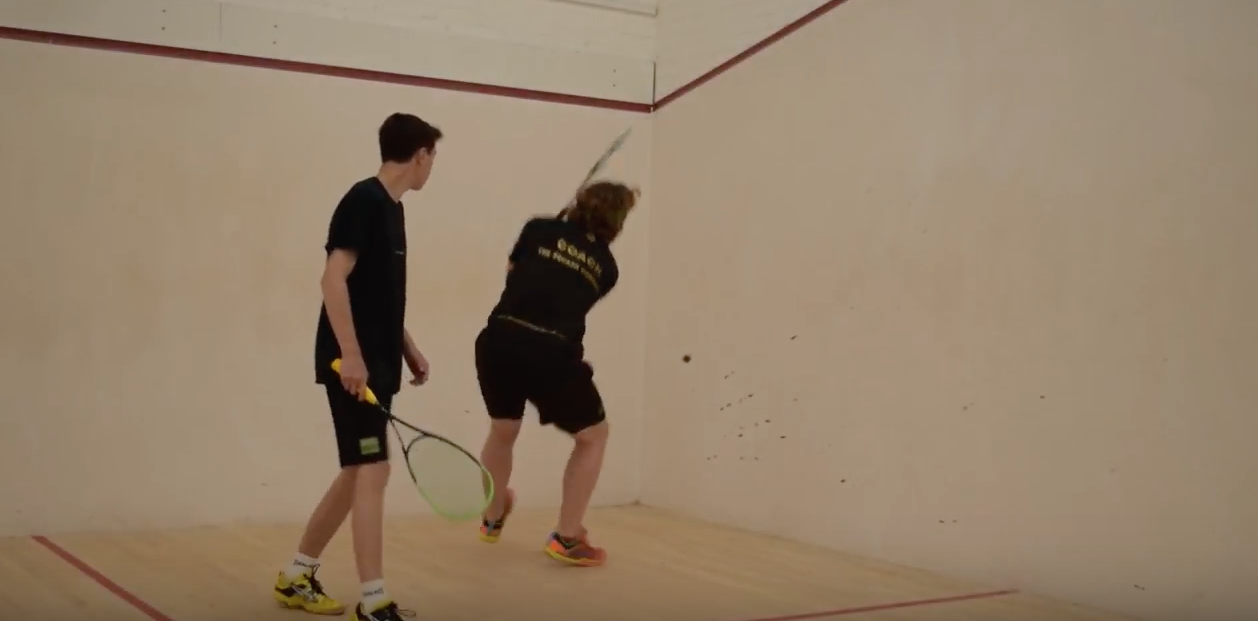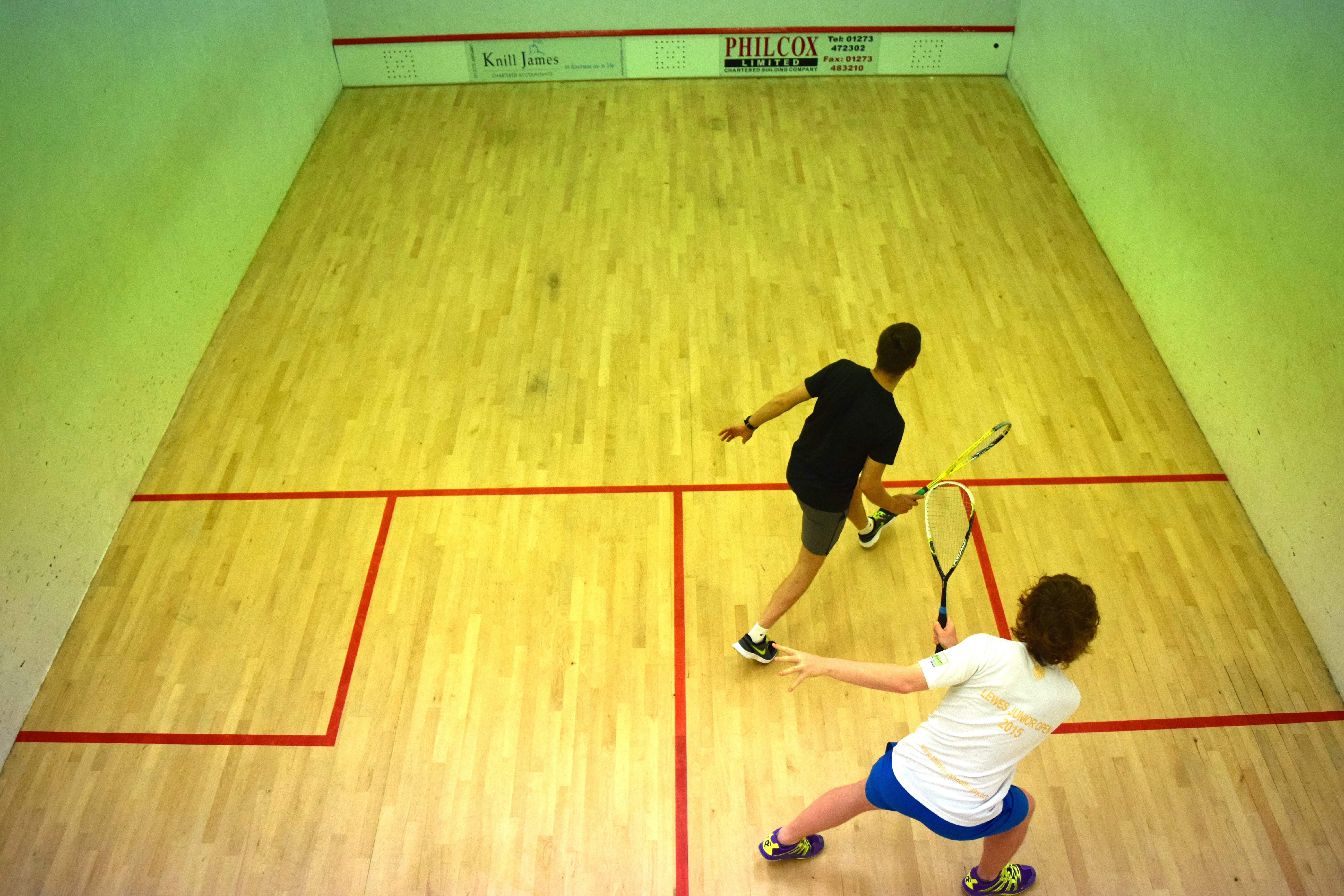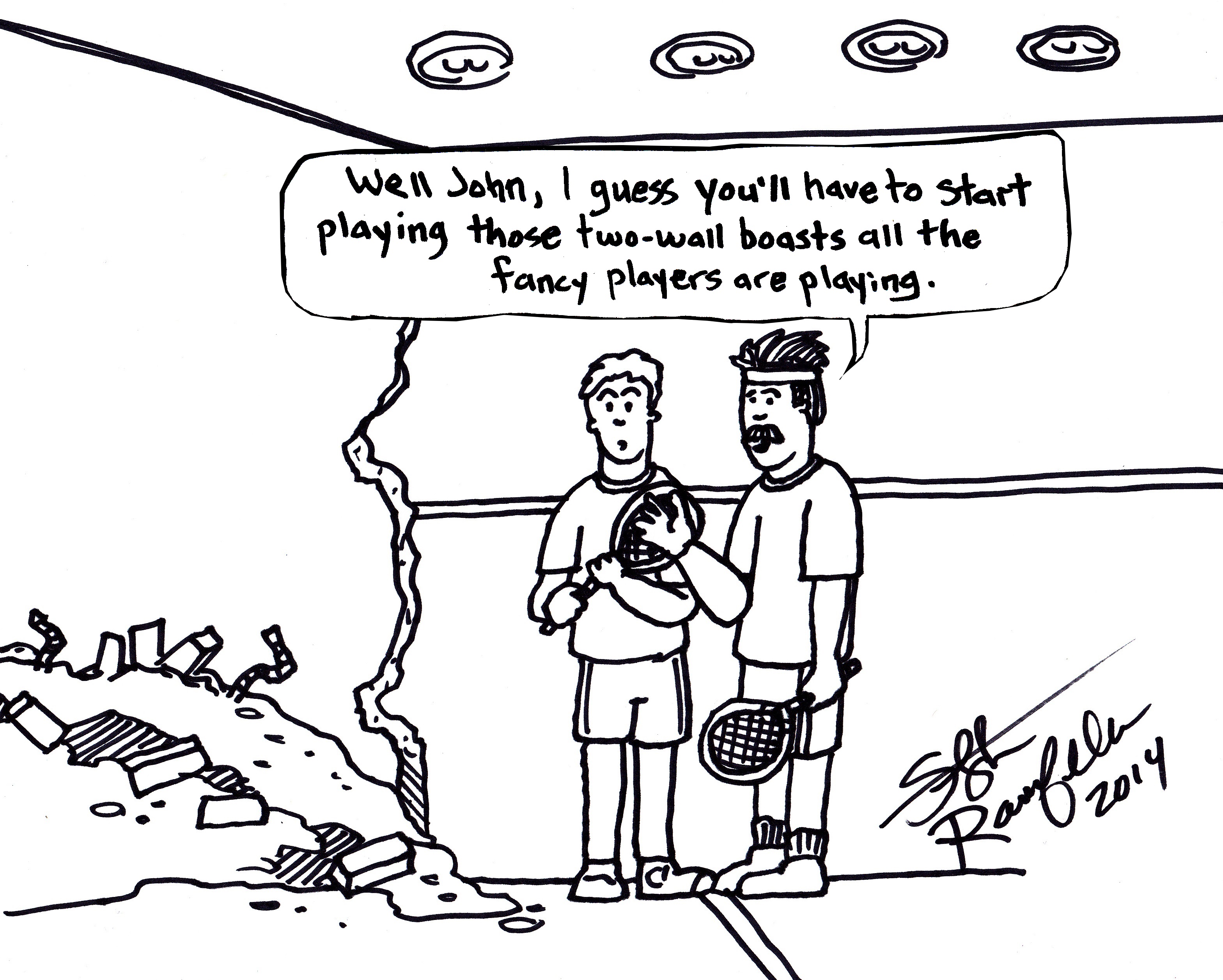One way to make yourself more dangerous from the back of the court and to vary your play is to hit the ball lower on the bounce as it’s rebounding off of the back wall. This is a great way to build some natural disguise into your play, as from this position you can easily play a straight drive, boast or cross-court drive from this position.
Building disguise into your game
It’s almost a form of brinkmanship, but if you allow the ball to get a bit lower on the bounce and a bit closer to the floor, you can really draw your opponent in expecting the straight shot. This means you’re in a great position to move between different shots like boasts, cross-courts and straight lengths from the back, which can help you to develop disguise in your game very easily. Even if your opponent stays glued to the T-Position, you’re still making it hard for them to anticipate your shot. This means they will have less reaction time once you’ve hit the ball and will therefore have to move faster to retrieve your shot. Not only does it create physical pressure, disrupting a player’s ability to anticipate also applies mental pressure which will be amplified if they are prone to frustration or losing belief in themselves.
On a technical level, it also forces you to really follow through the ball as you hit it, which means you often really hit an attacking, hard, low length if you do play straight. Peter Marshall was (and is) the king of this! These attacking drives can really apply immense pressure if you stop them coming off of the back wall too much as well, because they are hard to volley or intercept and give an opponent little reaction time, which means they are hard to return before they bounce twice.
You might have to open your racket face a bit more for your shots as the ball will be very low on the bounce and you might risk hitting the tin with the boast. If you’re aiming for a length shot, you may also need to aim a bit higher on the front wall, although it’s definitely a more effective attacking shot if you can keep the ball low.
This is quite an easy thing to practice and have a go at because of the amount of length shots people typically play. You can practice this very easily in a warm-up, as well as training or matches, so there really is no excuse not to have a go at this and see if it can add a bit more disguise into your game, and therefore put a bit more mental and physical pressure onto your opponents.


